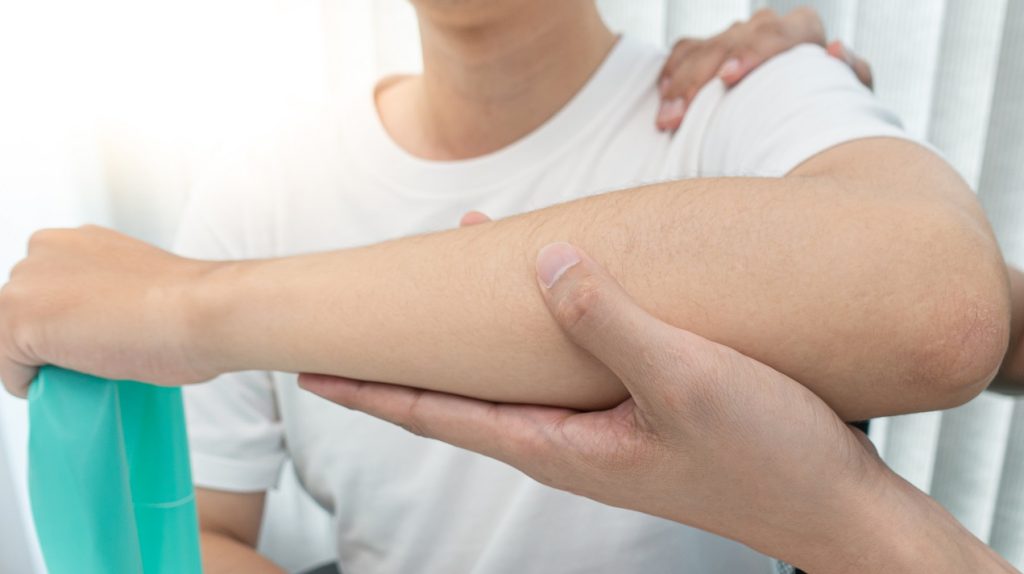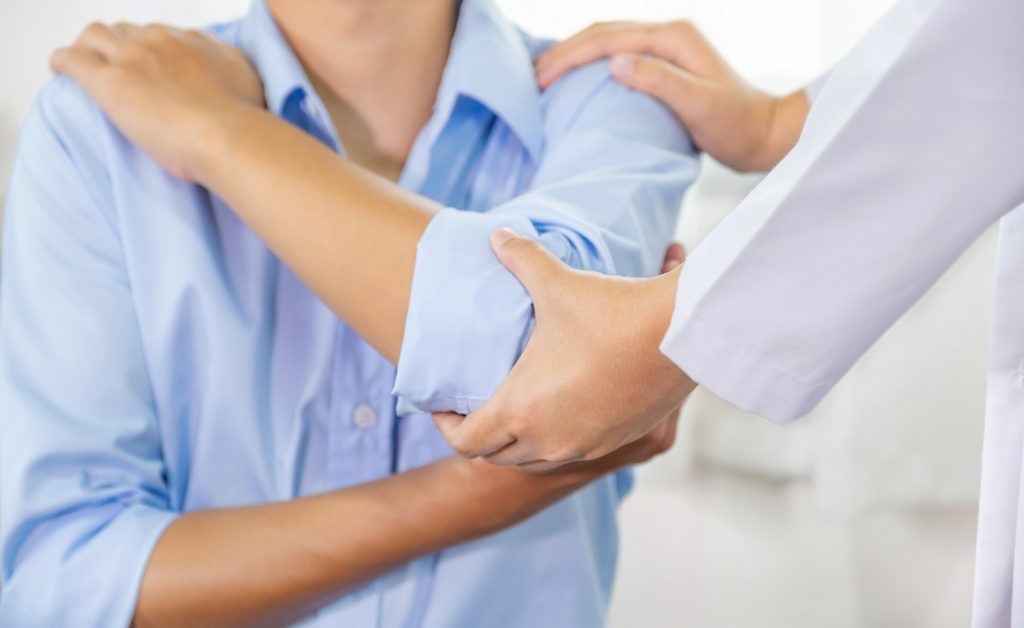Golfer's Elbow
Golfer’s elbow, medically known as medial epicondylitis, is a common condition characterized by pain and inflammation on the inner side of the elbow. Despite its name, golfer’s elbow can affect anyone who repeatedly uses their wrists or clenches their fingers, not just golfers. This condition primarily involves the tendons that attach to the medial epicondyle, a bony bump on the inside of the elbow.
Causes
Golfer’s elbow is typically caused by repetitive stress or overuse of the forearm muscles and tendons, leading to tiny tears in the tendon attachment at the medial epicondyle. Activities that commonly contribute to golfer’s elbow include golfing, racket sports, weightlifting, gardening, and manual labor. Poor technique, improper equipment, or inadequate warm-up can exacerbate the risk of developing this condition.

Symptoms of Golfer’s Elbow
Golfer’s elbow, or medial epicondylitis, presents with several distinctive symptoms that can gradually worsen over time. These symptoms typically include:
- Pain: One of the primary symptoms of golfer’s elbow is pain and tenderness on the inner side of the elbow. This discomfort is often exacerbated when gripping objects, flexing the wrist, or engaging in activities that involve wrist and finger movements, such as lifting, typing, or playing sports. The pain may start off mild and gradually intensify with continued use of the affected arm.
- Weakness: Golfer’s elbow can lead to a noticeable decrease in grip strength. Individuals may find it challenging to perform tasks that require forceful gripping or wrist flexion, such as shaking hands, opening jars, or lifting objects. Weakness in the affected arm can interfere with daily activities and reduce overall functionality.
- Stiffness: Stiffness and limited range of motion in the elbow joint are common symptoms of golfer’s elbow. Individuals may experience difficulty fully extending or flexing the elbow, especially in the morning or after periods of inactivity. The stiffness may improve with gentle movement but can persist throughout the day, affecting mobility and flexibility.
- Numbness or Tingling: In some cases, golfer’s elbow can lead to nerve irritation or compression, resulting in sensations of numbness or tingling that radiate down the forearm and into the fingers. This sensation, known as paresthesia, may occur intermittently or persistently and is often indicative of nerve involvement. Numbness or tingling may be more pronounced during specific activities or positions, such as when holding a phone or gripping objects tightly.
Diagnosis
Diagnosing golfer’s elbow typically involves a combination of medical history, physical examination, and imaging studies. A healthcare provider will assess the patient’s symptoms, review their medical history, and perform a physical examination to evaluate tenderness, range of motion, and strength in the affected elbow. X-rays or other imaging tests may be ordered to rule out other potential causes of elbow pain, such as fractures or arthritis.
Treatment
Golfer’s elbow, or medial epicondylitis, can be effectively managed with a combination of conservative treatments aimed at relieving pain, reducing inflammation, and promoting healing. Here are common treatment options:
- Rest: Avoiding activities that exacerbate symptoms is crucial for allowing the injured tendons to heal. Resting the elbow and avoiding repetitive movements can prevent further strain and facilitate recovery.
- Ice Therapy: Applying ice packs to the affected area for 15-20 minutes several times a day can help reduce pain and inflammation. Ice therapy can be particularly beneficial after activities that aggravate symptoms or at the end of the day.
- Physical Therapy: A structured rehabilitation program supervised by a physical therapist can play a key role in the treatment of golfer’s elbow. Physical therapy may include stretching exercises to improve flexibility, strengthening exercises to build forearm muscle strength, and manual techniques to alleviate pain and promote proper biomechanics.
- Medications: Over-the-counter pain relievers such as ibuprofen (Advil, Motrin) or acetaminophen (Tylenol) may be recommended to alleviate pain and reduce inflammation associated with golfer’s elbow. Nonsteroidal anti-inflammatory drugs (NSAIDs) can help control pain and swelling but should be used cautiously and under the guidance of a healthcare provider.
- Bracing: Wearing a forearm brace or splint can provide support and stability to the injured tendons, reducing strain during activities that may exacerbate symptoms. Bracing can help alleviate pain and promote healing by limiting excessive movement of the elbow joint.
- Corticosteroid Injections: In cases where conservative treatments fail to provide adequate relief, corticosteroid injections may be administered directly into the affected area to reduce inflammation and provide short-term pain relief. These injections can help alleviate symptoms but are typically used judiciously due to the risk of side effects with repeated use.
Prevention
To prevent golfer’s elbow:
- Warm up thoroughly before engaging in physical activities.
- Use proper technique and equipment, especially during sports and repetitive tasks.
- Gradually increase the intensity and duration of activities to avoid overloading the elbow muscles and tendons.
- Incorporate forearm strengthening and stretching exercises into your regular fitness routine.
When to Seek Medical Attention
If symptoms of golfer’s elbow persist despite conservative treatments, or if there is significant loss of function or range of motion in the elbow, it is important to seek medical attention. In some cases, more aggressive treatment options, such as corticosteroid injections or surgery, may be necessary to alleviate symptoms and restore elbow function.

Contact Us
If you’re experiencing symptoms of golfer’s elbow and seeking expert guidance and treatment, we recommend scheduling a consultation with Dr. Burhan. With extensive experience in orthopedic care and a compassionate approach to patient needs, Dr. Burhan is dedicated to providing personalized solutions to alleviate your discomfort and improve your quality of life. Take the first step toward relief and recovery by reaching out to us today.


